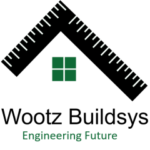
The construction world keeps changing. Pre engineering building structures are now all the craze. Why? They’re efficient, long-lasting, and budget-friendly. These structures are changing how we construct buildings. Better yet, they strengthen building stability. They’re now a top pick for many uses. This blog lets you in on the secret. We will examine how pre-engineering building structures boost building stability. Plus, we’ll show you why they are a clever bet for today’s construction projects.
Understanding Pre Engineering Building Structures
Pre engineering building structures are created by assembling pre-fabricated components manufactured in a controlled factory environment. These components include primary and secondary members, such as columns, beams, rafters, and purlins, which are designed and manufactured to precise specifications. Once these components are fabricated, they are transported to the construction site, where they are quickly and efficiently assembled to form the final structure.
Enhanced Structural Integrity Through Precision Engineering
What’s great about pre engineering building structure? Think accurate engineering in design and making. It’s like a puzzle where each piece fits just right, creating a strong, steady building. Want to know how pre-engineered buildings boost structural soundness? Here you go:
- Consistent Quality Control
The controlled factory environment in which pre-engineered components are manufactured ensures consistent quality control. Every piece is produced under stringent standards, minimizing the risk of defects or variations that could compromise structural integrity. This consistency translates to a reliable and durable final structure.
- Optimized Design
Pre engineering building structures benefit from advanced design software and techniques that optimize the use of materials. This optimization not only reduces waste but also ensures that each component is designed to withstand specific loads and stresses. The result is a structure that is both strong and efficient, with enhanced load-bearing capacity.
- High-Strength Materials
Pre-engineering building structures typically use high-strength steel and other durable materials that enhance the overall strength and resilience of the building. These materials are chosen for their ability to withstand various environmental conditions, including extreme weather, seismic activity, and other stresses that could compromise structural integrity in traditional construction.
- Uniform Load Distribution
The design of pre-engineering building structures allows for uniform load distribution across the entire building. This uniformity helps prevent localized stress points that can lead to structural failures. By distributing loads evenly, pre-engineered structures maintain their integrity and stability over time.
- Reduced Construction Errors
Traditional construction methods are prone to human errors during on-site fabrication and assembly. Pre-engineering building structures mitigate this risk by having most of the fabrication work completed in a controlled factory setting. This reduces the likelihood of errors that could weaken the structure and compromise its integrity.
Advantages of Pre-Engineering Building Structures
Pre engineering building structures do more than just hold strong. They have extra perks that make them a popular pick for today’s construction tasks:
- Faster Construction Times
The pre-fabrication process significantly reduces construction time compared to traditional methods. Components are manufactured in advance and simply assembled on-site, leading to faster project completion and reduced labor costs.
- Cost-Effectiveness
Pre-engineering building structures are cost-effective due to the efficient use of materials and reduced labor requirements. The precision engineering also minimizes waste, further reducing overall costs. - Design Flexibility
Pre engineering building structures offer a high degree of design flexibility, allowing for customization to meet specific project requirements. Whether it’s an industrial facility, commercial building, or residential structure, PEBs can be tailored to suit various needs.
- Sustainability
The efficient use of materials and the ability to incorporate sustainable design features make pre-engineering building structures an eco-friendly choice. These structures can be designed to maximize energy efficiency and reduce environmental impact.
Conclusion
Pre engineering building structures represent a significant advancement in the construction industry, offering enhanced structural integrity, faster construction times, cost-effectiveness, and sustainability. With their precision engineering, high-strength materials, and optimized design, PEBs are an excellent choice for a wide range of applications. Whether you’re a builder, developer, or architect, considering pre-engineering building structures for your next project can lead to a durable, efficient, and environmentally friendly construction solution. Embrace the future of building with pre-engineered structures and experience the benefits they bring to modern construction.
Frequently Asked Questions (FAQs)
Q1: What materials are commonly used in pre engineering building structure? Pre-engineered buildings primarily use high-strength steel for the structural framework. Other materials can include insulated panels, reflective roofing materials, and durable cladding to enhance energy efficiency and overall performance.
Q2: How long does it take to construct a pre-engineering building structure? Construction times for PEB structures are significantly shorter than traditional construction methods. Since components are pre-fabricated, the on-site assembly is much faster, often reducing construction time by up to 50%.
Q6: Can pre-engineering building structures be customized? Absolutely! Pre-engineering building structures offer high design flexibility, allowing for customization to meet specific project requirements. They can be tailored for various applications, including industrial, commercial, agricultural, residential, and institutional buildings.
cabe4d toto togel toto togel togel online toto togel situs toto jacktoto situs toto jacktoto situs toto situs slot situs toto jacktoto slot online


